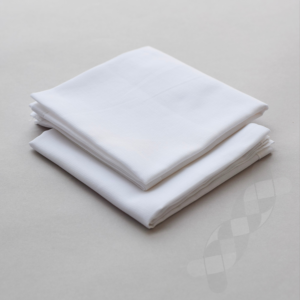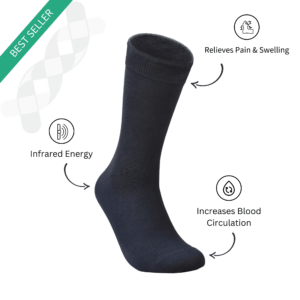The Atkins diet was a simple plan made by Dr. Robert C. Atkins in 1972. It was made to help overweight people loose weight and had a simple theory behind it that stated that by having lesser carbs we can reduce our weight even if our protein and fat intake is high. The Atkins diet gained a lot of popularity during the 1970s for all the wrong reasons. In a time when fats were labelled as unhealthy, no one could understand how high amounts of fat and proteins can help someone loose weight. However, in the later years, researchers found that healthy fat intake can actually help us shed those kilos.
Researchers have recently developed that saturated fats can lead to an increase in good cholesterol and a decrease in bad cholesterol, if they come from healthy sources. And thus, with the shift in research, the Atkins diet became quite popular among those who are diabetic or those who want to loose weight.
How to Start the Atkins diet
The Atkins diet is a sudden change to your system and your body will not be able benefit from it if you change your diet overnight. Rather, make sure the change is gradual yet steady. To make things simple the dieticians have broken the diet into four phases.
Phase 1: To begin, you need to reduce your carb intake to 20grams a day. Replace the rest of your meal with high – fats and high – protein products. Continue this for two weeks and by the end of the first week you will start to notice changes in your body.
Phase 2: The next stage is the balancing act, where you start to add healthy nuts and seeds because they are a great source of fats, vitamins and minerals. Also add small amounts of high fibre, low carb fruits and vegetables to your diet.
Phase 3: Monitor yourself. You will notice your weight reducing with the sudden drop of carbohydrates. When you are close to your weight goal you can increase healthy carbs to your diet.
Phase 4: At the final stage you retain all the healthy proteins and fats you have inculcated so far. But you can add a few more healthy carb varieties until your weight remains constant.
It will take a span of a few months to reach the fourth phase but it will take a lot of patience and mindfulness to train our natural tendencies.
Though these are the general four phases, we can tweak them slightly according to our needs. Some do not do the induction phase at all but stick close to the general guidelines of the diet.
Things to Eat
Meat
Since you need something filling as the base of your meal, the Atkins diet would be difficult for vegetarians to maintain. Anything from fish to lamb should be a stable in each meal.
Eggs
Eggs are a great source of fats and proteins and is also really filling
Nuts and Seeds
Almonds, walnuts, peanuts, sunflower seeds, flex seeds etc are all a crucial part of the Atkins diet.
Healthy Fats
This diet specifies that fats are never the problem it is their source that determines how good or how bad the fat is. Healthy fats like coconut oil, olive oil, avocado etc is really good for you.
Things to Avoid
Sugar
Anything form of table sugar and direct sugar is not a part of the Atkins diet. So, remember the moment you have a soft drink or a sweetened juice, cakes, candies, and really anything with sugar, you come out of the Atkins diet.
Grains
Grains are high in carbs and since the Atkins diet specifies on low carb meals, you should avoid all grains varieties like wheat, rice, millets etc.
Trans fats
Dr. Robert C. Atkins argued that saturated fatty acids are good for us. But they should not be confused with trans fats. Though a small portion of trans fats occur naturally, they are mostly artificially manufactured in food factories and fast food eateries. They don’t have any redeeming features and are one of the main reasons for bad cholesterol build-up.
‘Diet Food’
When something is labelled as diet food it is usually just a marketing gimmick. Sellers know they will loose out on customers if their products aren’t appetising. So, when they usually compensate for other high calorie products by adding more sugar. It is better to avoid ‘diet’ food altogether.
Starchy Vegetables
Starchy vegetables like potatoes and sweet potatoes mostly have carbohydrates that are later stored in our liver as glycogen. For those who follow the Atkins diet, the carbs in potatoes and sweet potatoes will completely throw off the sugar balance that you have worked so hard to establish.
How can it help Diabetics?
When doctor Robert C. Atkins developed this diet, he did it keeping diabetics in mind. Most diabetics at this time were asked to have a moderate to high carb intake because of their tendency to go into hypoglycaemic shock. The Atkins diet however asks us to do the opposite.
It is not as restrictive as the ketogenic diet and hence diabetics fair much better in it. It is also geared towards those who need to loose weight, since many diabetics struggle with weight problems, the Atkins diet might allow them a better hold on their diabetes.
If you are diabetic and are considering a diet change, you should consider the Atkins diet. This will help you manage your diabetes as well as your weight. However, if is imperative that you talk to your doctor/dietician before you begin.
Disclaimer: We want to clarify that we are not medical experts. The human body is unique and tends to react differently with different diets. Please talk to your doctor or dietician who is familiar with your medical history before starting a new diet. They are trained to guide you keeping your medical history, health and agility in mind.




























